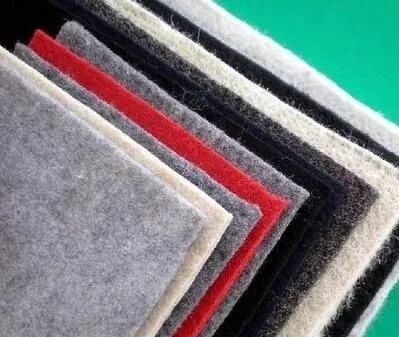Needle punching nonwoven production process and principle
Needle-punched nonwoven production process and principle, speaking of nonwoven fabrics, many friends know that this is a kind of fibre composed of a kind of cloth with the same nature of the cloth, but it has the real cloth does not have some of the characteristics, that is, this nonwoven material is made of polypropylene, and it can be moisture-proof, difficult to tear and so on a series of real cloth does not have the characteristics of the cloth, so today to give you an introduction! How to make this kind of non-woven fabric, one of the methods is the knitting method, that is, this kind of non-woven material with felting needle for crochet. The following is a detailed description of the production process and principle of needle punched nonwoven fabrics.

Processes:
The first step
The first step needle punched nonwoven fabric is made of polyester, polypropylene raw materials, by combing, combing, pre-needling, main needling. Centre plus mesh cloth sandwich, and then by double channel nucleation, airflow into a net needle punching composite into a cloth, after the pressure filter cloth has a three-dimensional structure, by heat-setting.
The second step
After the second step of sintering, the most in the surface by the chemical oil treatment, so that the filter cloth appearance smooth, uniform distribution of microporous, from the surface of the product’s density is good, the two sides of the surface clean and breathable degree of good, in the plate and frame compressor filtration use proved to be able to use the high strength pressure, filtration accuracy up to 4 microns or less, according to user needs to provide polypropylene and polyester two kinds of raw materials.
Experimental effects
Practice has proved that the non-woven filter cloth has better performance in plate and frame press filtration: for example, coal sludge treatment in coal processing plant, wastewater treatment in iron and steel plant. In the brewery, printing and dyeing plant wastewater treatment. If you use other specifications of filter cloth will appear the cake pressure is not dry, and difficult to fall off the problem, with non-woven filter cloth, the cake in the filter pressure reaches 10kg-12kg when quite dry, and the filter will automatically fall off the cake when the filter machine open frame. Users in the choice of non-woven filter cloth, mainly based on the amount of air permeability, filtration precision, elongation, etc. to consider different thickness, quality of non-woven filter cloth, product parameters, please point polyester needle felt and polypropylene needle felt, specifications and varieties can be developed.
Needle-punching nonwoven fabrics are formed through fine carding, precision needling or appropriate hot-rolled treatment for many times. Based on the introduction of two high-precision needle punching production lines at home and abroad, high quality fibres are selected. Through different production processes and the matching of different materials, hundreds of different products are circulating in the market at present.
The main ones are: geotextile, geomembrane, halberd cloth, speaker blanket, electric blanket cotton, embroidery cotton, clothing cotton, Christmas crafts, human leather base cloth, special cloth for filtration materials. Processing principle with the needling method of production of nonwoven fabrics is entirely through a mechanical effect, that is, the needles of the needling machine puncture effect, the fluffy fibre mesh reinforcement hold together and get strong.
Fundamentals:
Repeated puncturing of the fibre web with barbs on the edges of the prongs of the triangular cross-section (or other cross-section). When the barbs pass through the fibre mesh, the fibre mesh surface and partial lining fibres are forced into the fibre mesh. Due to the friction between the fibres, the original fluffy fibre mesh is compressed. Needle out of the fibre mesh, stabbing the fibre bundles out of the barb and stay in the fibre mesh, so that many fibre bundles entangled in the fibre mesh so that it can not be restored to the original fluffy state. After many times of needling, quite a lot of fibre bundles are pierced into the fibre mesh, so that the fibres in the fibre mesh are entangled with each other, so as to form a certain strength and thickness of the needling method of non-woven materials.


